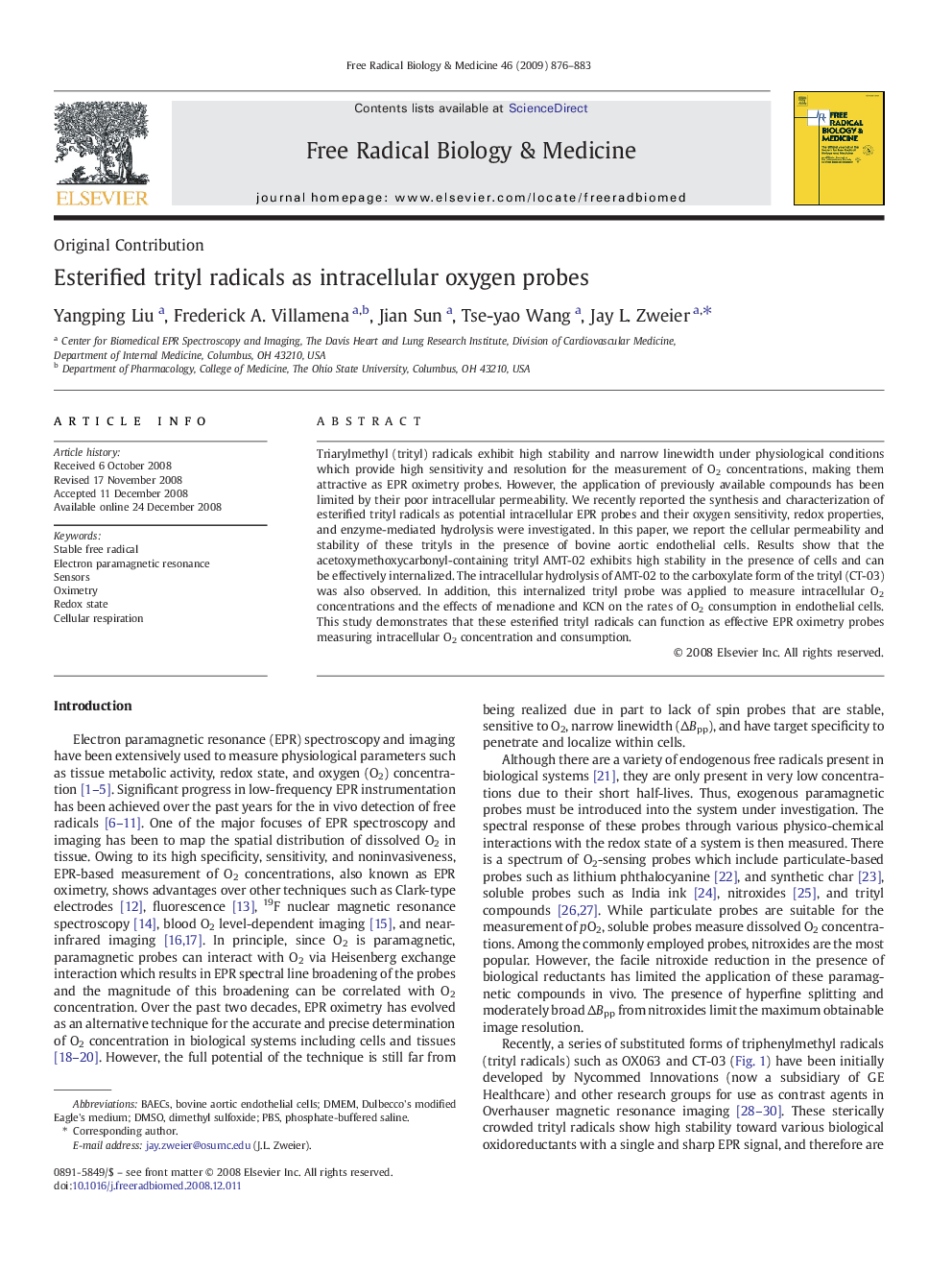| Article ID | Journal | Published Year | Pages | File Type |
|---|---|---|---|---|
| 1910182 | Free Radical Biology and Medicine | 2009 | 8 Pages |
Triarylmethyl (trityl) radicals exhibit high stability and narrow linewidth under physiological conditions which provide high sensitivity and resolution for the measurement of O2 concentrations, making them attractive as EPR oximetry probes. However, the application of previously available compounds has been limited by their poor intracellular permeability. We recently reported the synthesis and characterization of esterified trityl radicals as potential intracellular EPR probes and their oxygen sensitivity, redox properties, and enzyme-mediated hydrolysis were investigated. In this paper, we report the cellular permeability and stability of these trityls in the presence of bovine aortic endothelial cells. Results show that the acetoxymethoxycarbonyl-containing trityl AMT-02 exhibits high stability in the presence of cells and can be effectively internalized. The intracellular hydrolysis of AMT-02 to the carboxylate form of the trityl (CT-03) was also observed. In addition, this internalized trityl probe was applied to measure intracellular O2 concentrations and the effects of menadione and KCN on the rates of O2 consumption in endothelial cells. This study demonstrates that these esterified trityl radicals can function as effective EPR oximetry probes measuring intracellular O2 concentration and consumption.
